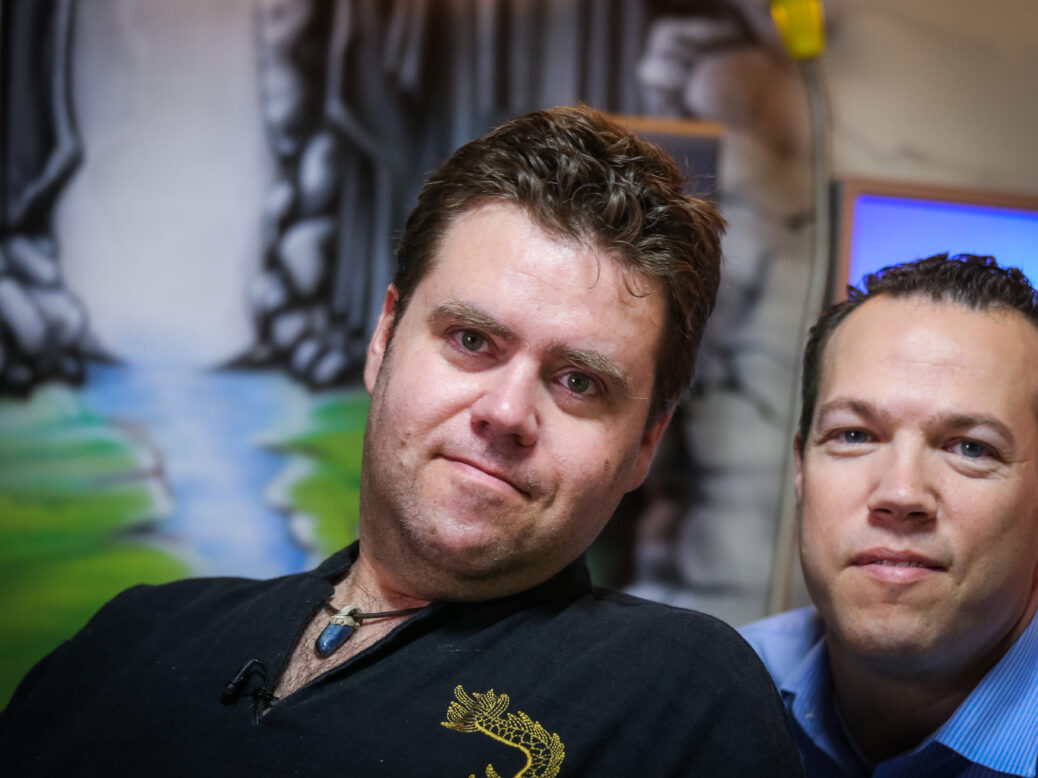
How do you type if you can’t use your hands? Dictation might be your first thought, but for sufferers of neurodegenerative diseases, this isn’t always an option. Dysarthria – severe speaking difficulty – is a common symptom of many disorders such as Parkinson’s and Huntingdon’s disease, which can render communication almost impossible.
To combat this, an Israeli duo has developed an innovative solution. Click2speak is an exciting new piece of software that could have a huge impact for paralysed people – it allows the user to type on a virtual keyboard using nothing more than eye-movements.
Gal Sont is the inspirational figure behind the tech. Described by co-founder Dan Russ as a reckless adrenaline-lover, Sont’s energetic lifestyle changed in 2009 when he was diagnosed with ALS – the most common type of motor neurone disease. It causes nerve cells in the spine and brain to degenerate, preventing voluntary muscle movement and progressively paralysing the entire body. There is no known cure.
After being diagnosed with the disease, I contacted other individuals who suffer from ALS at different stages, and began to learn about the different challenges that I would face as my disease progressed. I also learned about the tech solutions they used to cope with these challenges.
The most basic challenge was typing, which is done using a virtual on screen keyboard, a common solution shared by not only individuals affected by ALS, but a variety of illnesses such as brain trauma, MS [multiple sclerosis] and stroke victims. The fully featured advanced on-screen keyboards, again proved relatively very expensive (starting at $250), so I decided to develop the ultimate on-screen keyboard on my own.”
This was a bit easier than it sounds – the maths and computer science graduate has been programming for decades. As his situation deteriorated and he lost the ability to use a mouse, Sont purchased an advanced eye-tracking camera to allow him to code Click2speak with his eyes. Here’s how it looks from the user’s point-of-view:
On its own, this technology is actually nothing new. Fellow ALS sufferer Stephen Hawking has used facial recognition software to track cheek and eyebrow movements as well, in order to spell out words. What makes this technology so sophisticated is the inclusion of tech from the highly successful Swiftkey Android keyboard – its AI technology learns to predict his words based on sources like texts, Facebook messages and tweets. Sont used it to greatly speed up the process of typing words without hands.
This started a new journey that introduced me to SwiftKey’s revolutionary technologies and how we customize them to our specific needs. I reached a first version of our keyboard and distributed it to friends who also suffer from ALS. They gave us invaluable feedback through the development process, and they all raved about its time saving capabilities and accuracy and how it makes their lives a little easier.”
The last couple of months have been exciting in terms of technological developments – we’ve seen Google and Apple hold conferences showcasing driverless cars and smartwatches – but this niche development seems to pack more punch. The team are looking to quickly get a first version out on the market as soon as possible, and eventually ensure all paralysed individuals can have easily affordable access to this sort of assistive technology.





